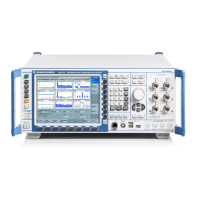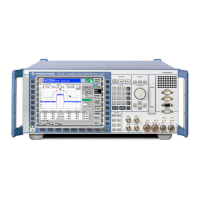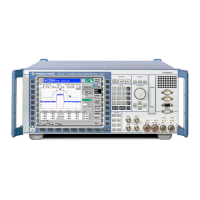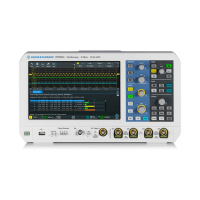Command Reference - Base Software
R&S
®
CMW500
212User Manual 1173.9463.02 ─ 06
Firmware/Software: V2.0.10
TRACe:REMote:MODE:DISPlay:ENABle <Enable>
Enables or disables the display of the SCPI remote trace. Two modes are available when
the display is enabled: a live mode and an analysis mode.
Parameters:
<Enable> ANALysis | LIVE | OFF
ANALysis: stop tracing to analyse already traced messages
LIVE: trace messages and display them
OFF: disable the report display
Default value: OFF
Example:
TRACe:REMote:MODE:DISPlay:ENABle LIVE
Activate the live mode.
Firmware/Software: V2.1.10
TRACe:REMote:MODE:DISPlay:CLEar
Clears the display of the SCPI remote trace in analysis mode.
Usage:
Event
Firmware/Software: V3.0.10
6.3.7 Mass Memory Commands
The MMEMory subsystem provides mass storage capabilities for the R&S CMW500. For
MMEMory commands related to command macros see chapter 6.3.1, "Macro Com-
mands", on page 197.
The following rules apply to parameters specifying files or directories:
●
Parameters for specification of file names and directory names are strings.
●
You can specify complete absolute paths including the drive name and all subdirec-
tories. For locations in a network use the Universal Naming Convention (UNC) format
'\\server\share'.
Examples: 'C:\TEMP\TRASH\test.txt' specifies the file named test.txt in
the directory TEMP\TRASH of the internal hard disk drive C:\.
'\\myserver\data\archive\test.txt' specifies the file named test.txt in
the subdirectory archive of the share data on the server myserver.
●
If you specify a string containing an absolute path but no drive or server, the default
storage unit is prefixed automatically (see MMEMory:MSIS on page 221).
●
If you specify a string containing a relative path, the current directory is prefixed
automatically (see MMEMory:CDIRectory on page 217).
●
Alias strings facilitate the entry of paths. To display the predefined alias strings and
the assigned paths see MMEMory:ALIases? on page 214. The defined strings can
be combined with normal text to specify file paths. Example:
Instrument-Control Commands
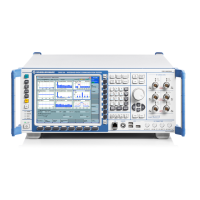
